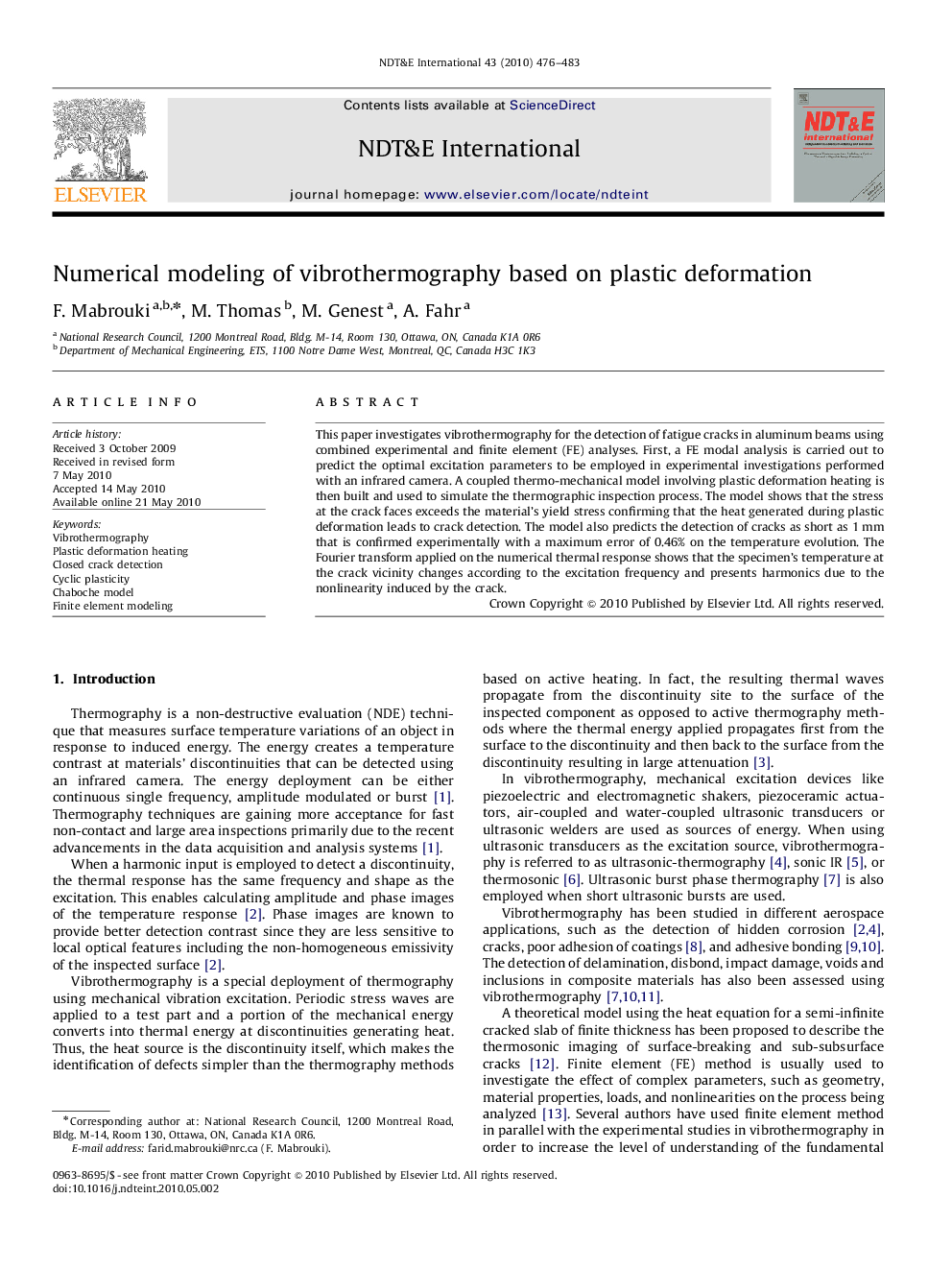| Article ID | Journal | Published Year | Pages | File Type |
|---|---|---|---|---|
| 295628 | NDT & E International | 2010 | 8 Pages |
This paper investigates vibrothermography for the detection of fatigue cracks in aluminum beams using combined experimental and finite element (FE) analyses. First, a FE modal analysis is carried out to predict the optimal excitation parameters to be employed in experimental investigations performed with an infrared camera. A coupled thermo-mechanical model involving plastic deformation heating is then built and used to simulate the thermographic inspection process. The model shows that the stress at the crack faces exceeds the material’s yield stress confirming that the heat generated during plastic deformation leads to crack detection. The model also predicts the detection of cracks as short as 1 mm that is confirmed experimentally with a maximum error of 0.46% on the temperature evolution. The Fourier transform applied on the numerical thermal response shows that the specimen’s temperature at the crack vicinity changes according to the excitation frequency and presents harmonics due to the nonlinearity induced by the crack.
